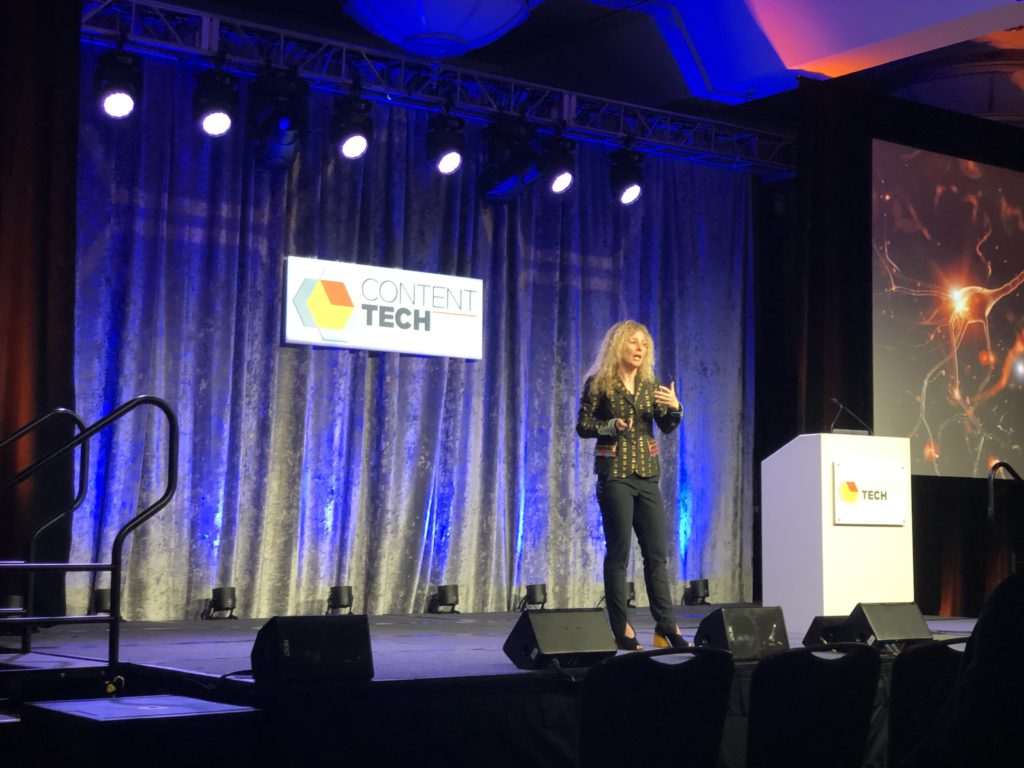
Stamats Insights
April 11, 2019

Carmen Simon is a content marketing leader—and also a cogitative neuroscientist. Founder of Memzy, a company that uses neuroscience to help create memorable messages, Simon kicked off day two of the 2019 ContentTECH Summit in San Diego with a presentation about how marketers can create unforgettable content in today’s busy digital world.
When audiences are overloaded with content, how do we make our voices and messages not just heard, but also remembered?
According to Simon, marketers should alter these three features of highly forgettable content to strengthen their messaging and drive business results.
Creating content that does not attract attention will obviously result in forgettable messages. According to Simon, attention paves the way to memory. Knowing how people pay attention is the first step to creating memorable content.
Generally, people pay attention in four ways:
At ContentTECH, Simon shared that “working memory” is “attention plus memory.”
If you can get a user’s attention with an active, directed, rewarding message, the content will stay top-of-mind longer than more passive messaging. Adding familiarity, such as simple wording and descriptions are ways to do this.
Too much of the content out there today isn’t original and it starts to all look the same. For example: “_____ is the first choice of doctors for their own pain relief.” Is it Bayer? Motrin? Tylenol?
This kind of similar content can create gist memory, where your message can be skewed, or source confusion, where your message is attributed to another organization or brand.
To avoid unoriginal messaging, deviate from the pattern that the brain has learned to expect.
For example, our content marketing team at Stamats rarely asks subject matter experts to share basic information about the topic at hand.
Rather, we know our clients want unique and interesting content, so we discuss differentiators with clients instead. This approach spares readers from boring, same old information and improves the “standoutability” of the content.
According to Simon, it’s a myth that some people are more visual that others. She says we are all visual beings. That said, people can experience concrete concepts using the five senses, whereas using “abstract content” is something that gets people thinking outside the box.
The more concrete the visual is, the more likely we are to remember it, so abusing abstracts will not lead to memorable content. However, there is a balance to using both elements to build mental pictures in the minds of your audiences. According to Simon, using too much concrete messaging can make your content too generalized.
Knowing the ways people pay attention to your messaging and understanding the neuroscience behind what makes content memorable can give you leverage to produce content that will have a lasting impact on your audience.
Ready to discuss your goals and opportunities? Email our digital strategy team today.
Ready to Get Started?
Reach out to us to talk about your strategy and goals.